Abstract
The bootstrap computer-intensive statistical technique is frequently applied to statistical analyses of phylogenetic trees. The widely used rule that a group is supported significantly if it appears in at least 95% of bootstrap trees is conservative in most situations. This paper describes three ways of using the bootstrap to carry out statistical inference on phylogenies. The first method tests whether there is nonrandom support for a single group or tree. The second method compares the support for two groups or trees. The third method tests whether a single group or tree has better support than the set of all possible alternatives; this may be a replacement for the "95% rule." These tests generally require fewer bootstrap trees to be estimated than do other methods of bootstrapping phylogenies. A simple, sequential statistical method can be used to increase the efficiency further. These methods can be applied to tests of multiple hypotheses about a single phylogeny. Parsimony analyses of 5S rRNA sequences of plants and cluster analyses of randomly amplified polymorphic DNA bands in three pathotypes of the cereal eyespot fungus are used as illustrative examples. The tests can be used to analyze dendrograms in subjects other than taxonomy.
Full text
PDF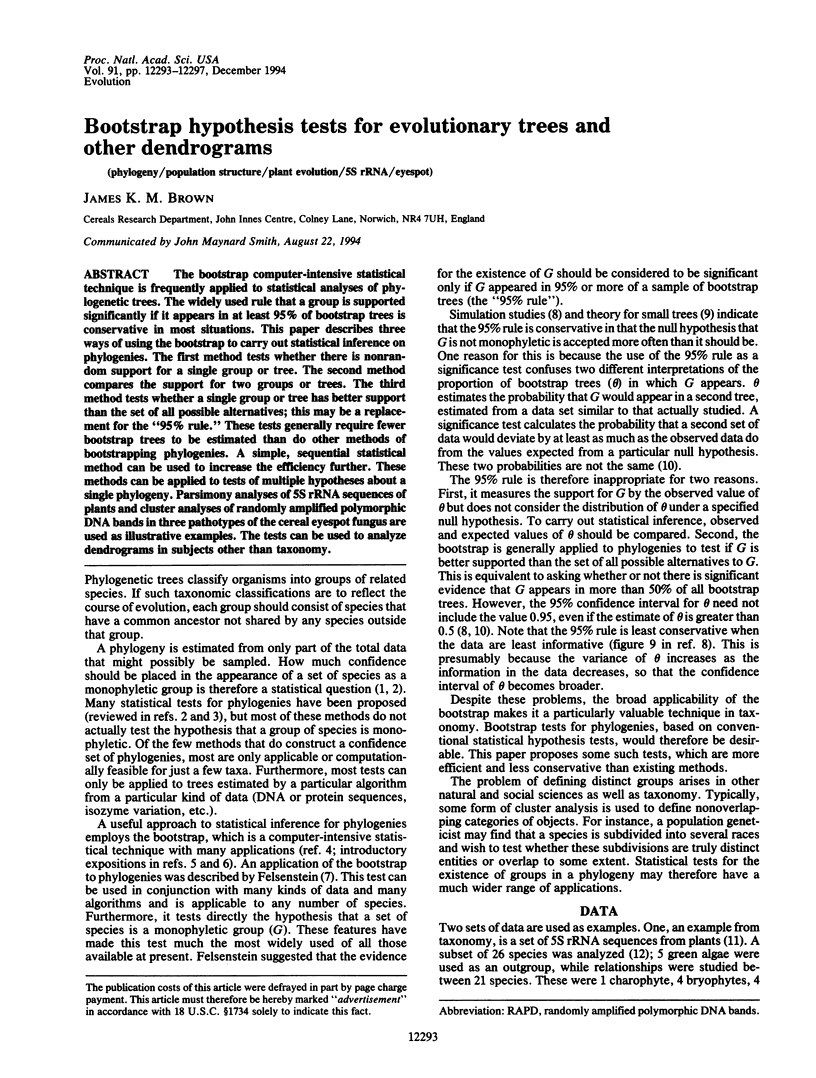
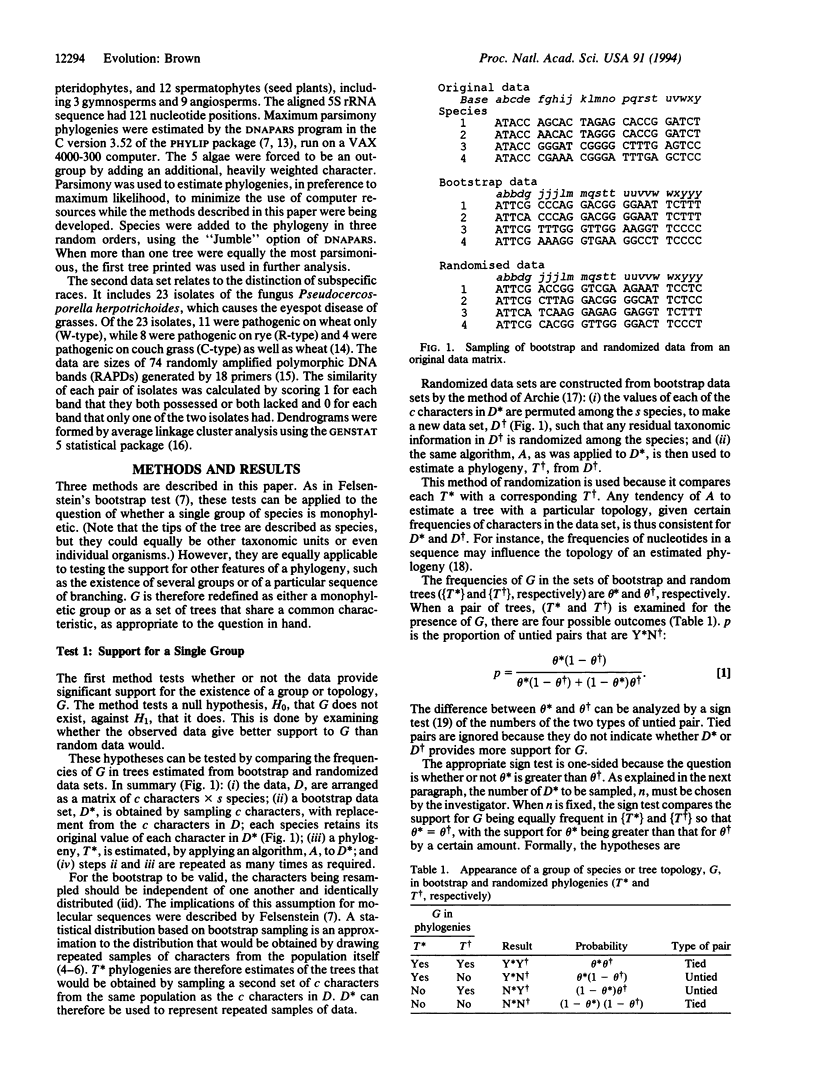
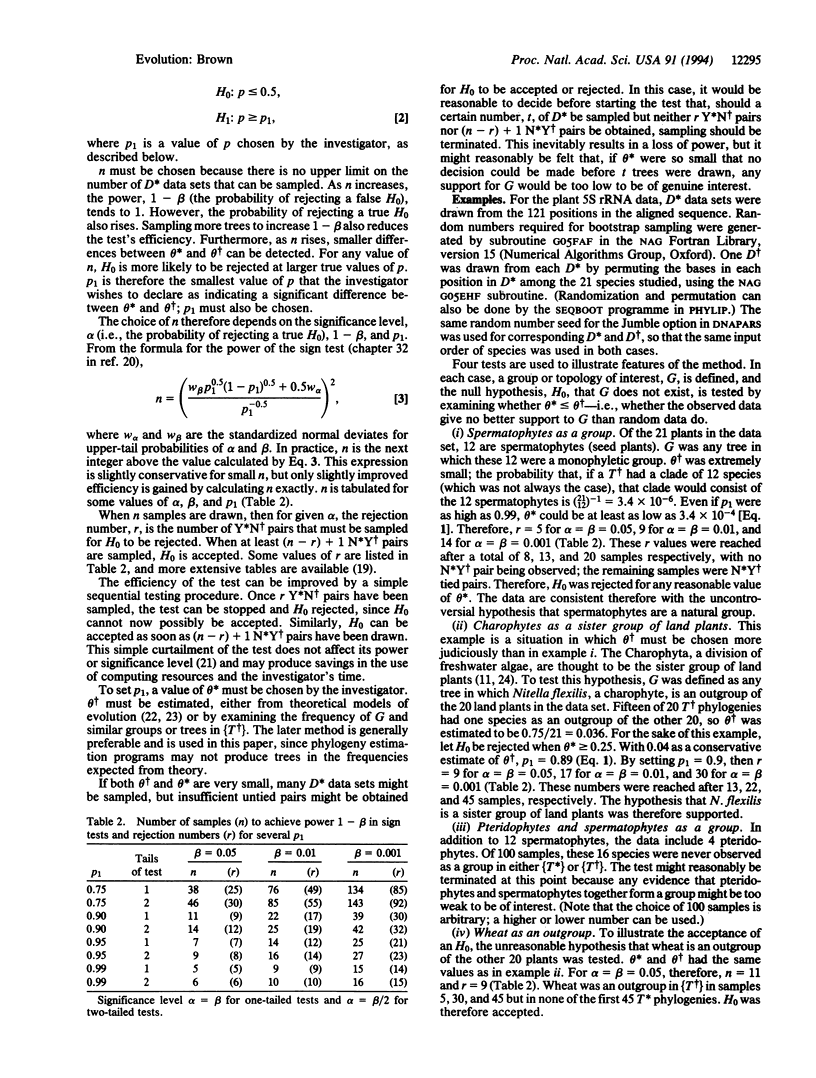
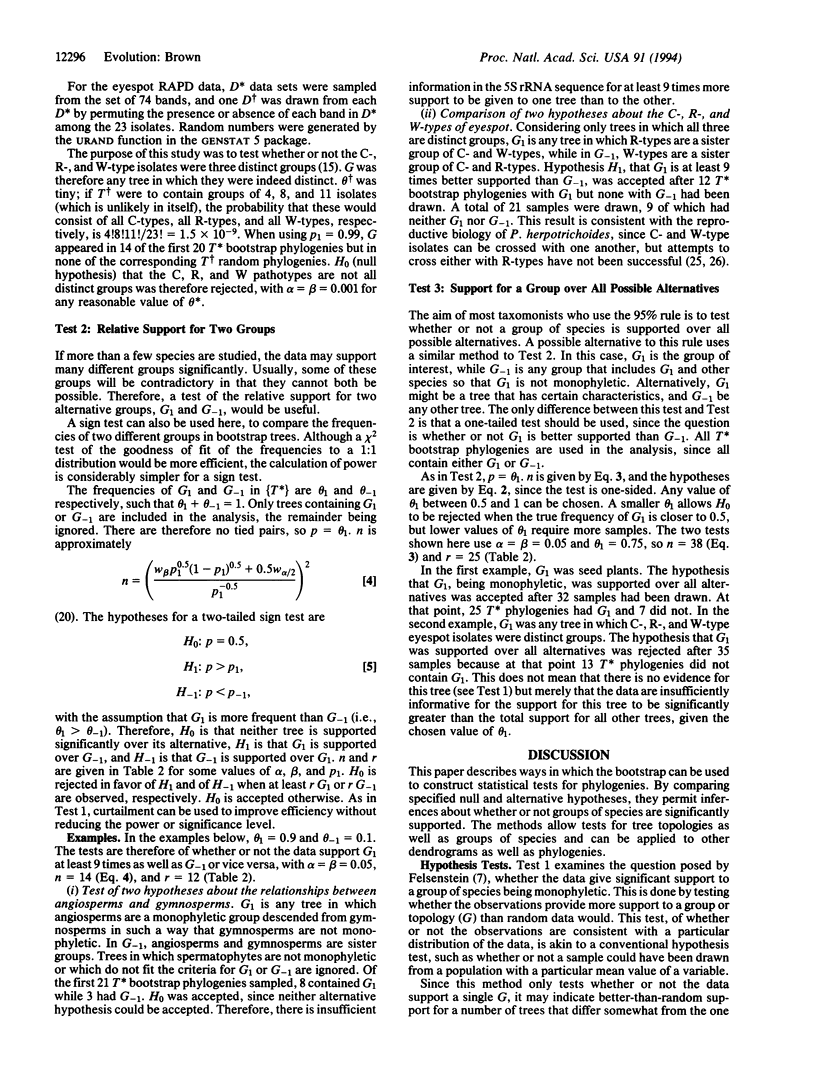
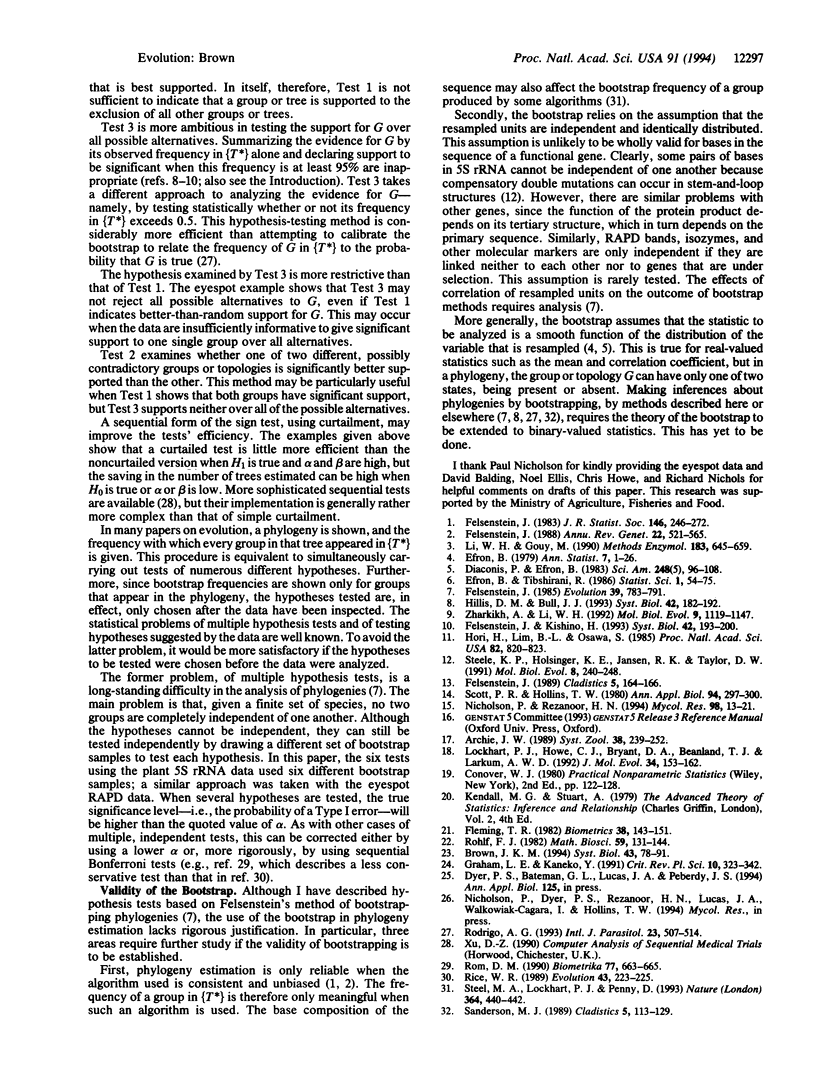
Selected References
These references are in PubMed. This may not be the complete list of references from this article.
- Felsenstein J. Phylogenies from molecular sequences: inference and reliability. Annu Rev Genet. 1988;22:521–565. doi: 10.1146/annurev.ge.22.120188.002513. [DOI] [PubMed] [Google Scholar]
- Fleming T. R. One-sample multiple testing procedure for phase II clinical trials. Biometrics. 1982 Mar;38(1):143–151. [PubMed] [Google Scholar]
- Hori H., Lim B. L., Osawa S. Evolution of green plants as deduced from 5S rRNA sequences. Proc Natl Acad Sci U S A. 1985 Feb;82(3):820–823. doi: 10.1073/pnas.82.3.820. [DOI] [PMC free article] [PubMed] [Google Scholar]
- Li W. H., Gouy M. Statistical tests of molecular phylogenies. Methods Enzymol. 1990;183:645–659. doi: 10.1016/0076-6879(90)83042-8. [DOI] [PubMed] [Google Scholar]
- Lockhart P. J., Howe C. J., Bryant D. A., Beanland T. J., Larkum A. W. Substitutional bias confounds inference of cyanelle origins from sequence data. J Mol Evol. 1992 Feb;34(2):153–162. doi: 10.1007/BF00182392. [DOI] [PubMed] [Google Scholar]
- Steel M. A., Lockhart P. J., Penny D. Confidence in evolutionary trees from biological sequence data. Nature. 1993 Jul 29;364(6436):440–442. doi: 10.1038/364440a0. [DOI] [PubMed] [Google Scholar]
- Zharkikh A., Li W. H. Statistical properties of bootstrap estimation of phylogenetic variability from nucleotide sequences. I. Four taxa with a molecular clock. Mol Biol Evol. 1992 Nov;9(6):1119–1147. doi: 10.1093/oxfordjournals.molbev.a040782. [DOI] [PubMed] [Google Scholar]


